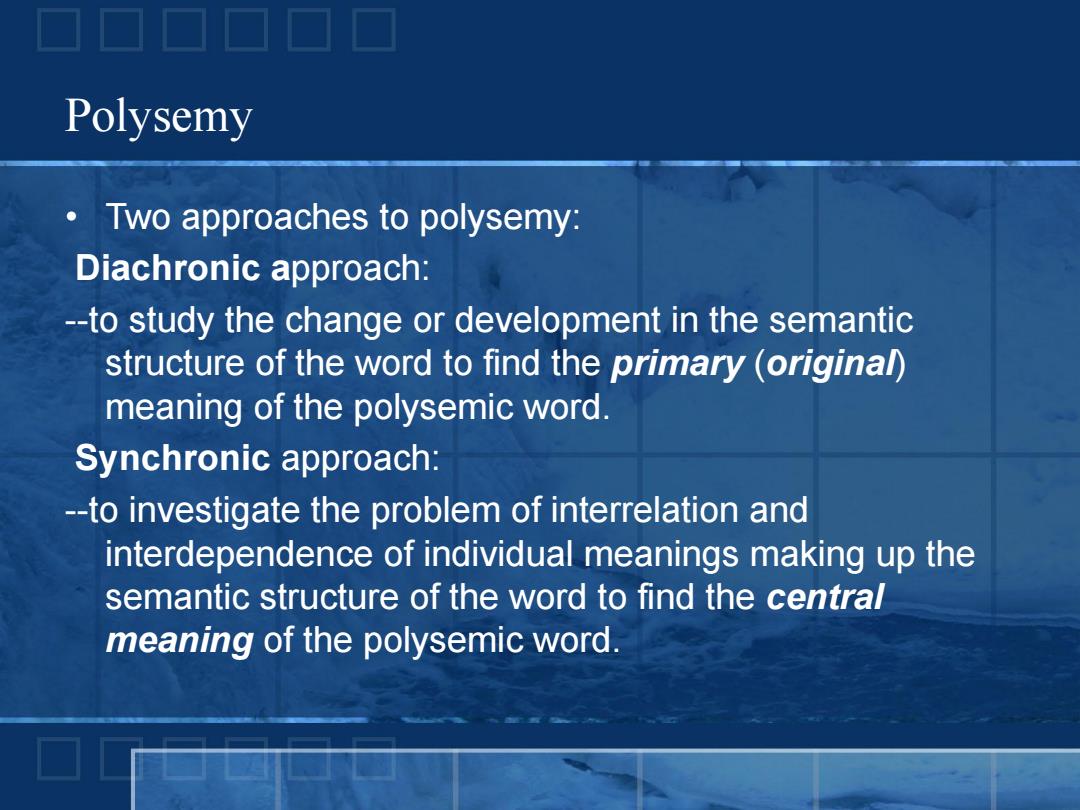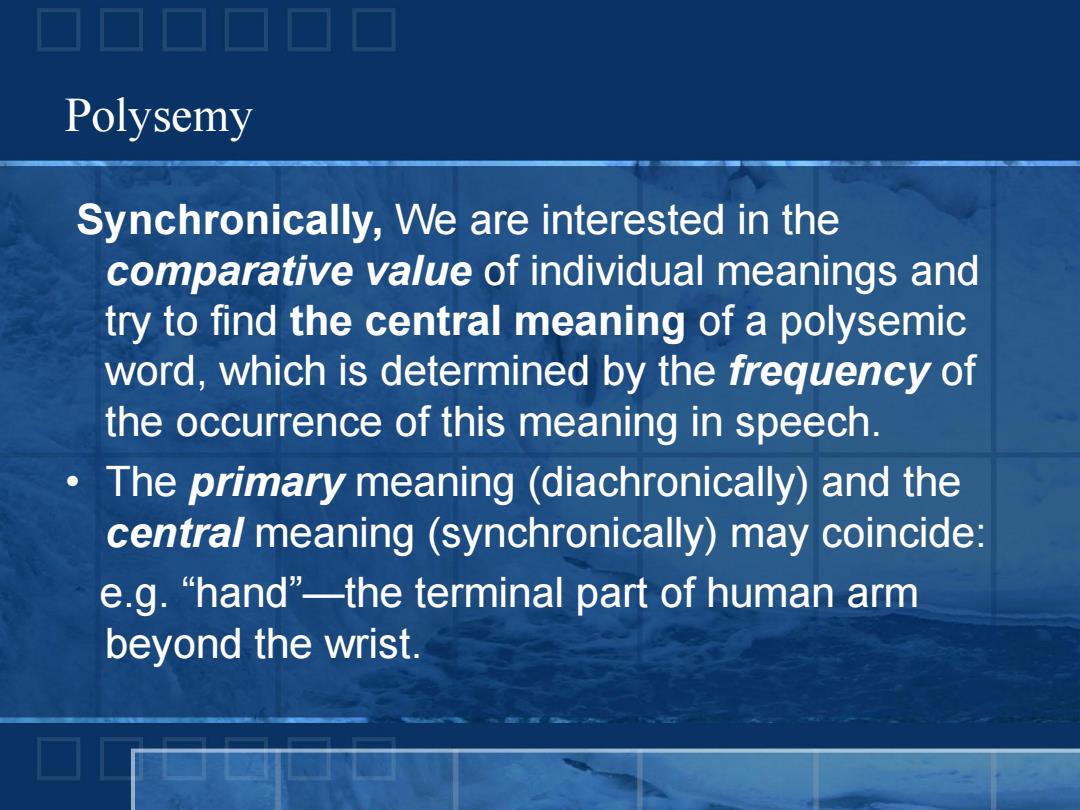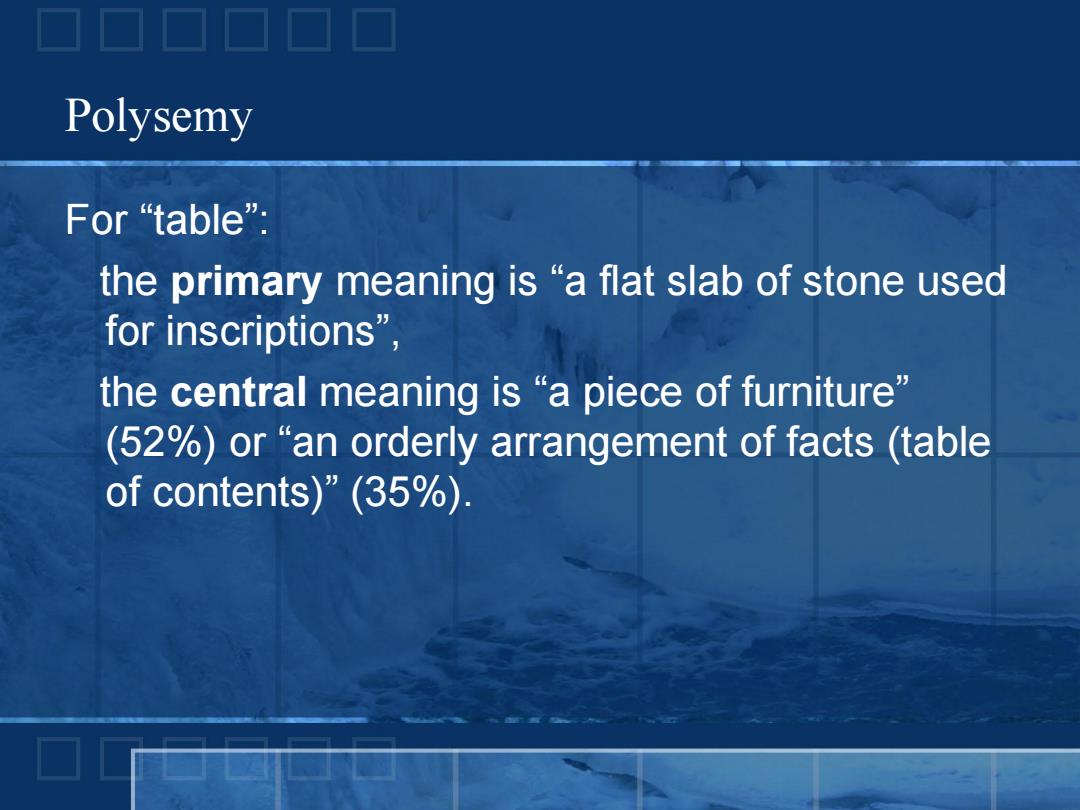
Polysemy Two approaches to polysemy: Diachronic approach: --to study the change or development in the semantic structure of the word to find the primary (original) meaning of the polysemic word. Synchronic approach: --to investigate the problem of interrelation and interdependence of individual meanings making up the semantic structure of the word to find the central meaning of the polysemic word
• Two approaches to polysemy: Diachronic approach: --to study the change or development in the semantic structure of the word to find the primary (original) meaning of the polysemic word. Synchronic approach: --to investigate the problem of interrelation and interdependence of individual meanings making up the semantic structure of the word to find the central meaning of the polysemic word. Polysemy

Polysemy Synchronically,We are interested in the comparative value of individual meanings and try to find the central meaning of a polysemic word,which is determined by the frequency of the occurrence of this meaning in speech. The primary meaning (diachronically)and the centra/meaning (synchronically)may coincide: e.g.“hand”-the terminal part of human arm beyond the wrist
Synchronically, We are interested in the comparative value of individual meanings and try to find the central meaning of a polysemic word, which is determined by the frequency of the occurrence of this meaning in speech. • The primary meaning (diachronically) and the central meaning (synchronically) may coincide: e.g. “hand”—the terminal part of human arm beyond the wrist. Polysemy

Polysemy The primary and the central meanings may not coincide: “table”has the following meanings: (1)a piece of furniture; (2)the persons seated at a table; (3)the food put on a table,meals; (4)a flat slab of stone or wood (O.E.tabule); (5)words put into or on it; (6)an orderly arrangement of facts,figures; (7)part of a machine tool; (8)a level area,a plateau
Polysemy The primary and the central meanings may not coincide: “table” has the following meanings: (1) a piece of furniture; (2) the persons seated at a table; (3) the food put on a table, meals; (4) a flat slab of stone or wood (O.E. tabule); (5) words put into or on it; (6) an orderly arrangement of facts, figures; (7) part of a machine tool; (8) a level area, a plateau

Polysemy For“table”: the primary meaning is "a flat slab of stone used for inscriptions”, the central meaning is "a piece of furniture" (52%)or "an orderly arrangement of facts (table of contents)”(35%)
For “table”: the primary meaning is “a flat slab of stone used for inscriptions” , the central meaning is “a piece of furniture” (52%) or “an orderly arrangement of facts (table of contents)” (35%). Polysemy

Polysemy Two processes leading to polysemy: Radiation(词义辐射)&Concatenation(词义连锁) Radiation: a semantic process in which the primary or centra/meaning stands at the center while secondary meanings radiate from it in every direction like rays.(see the example in the textbook)
Polysemy • Two processes leading to polysemy: Radiation (词义辐射) & Concatenation (词义连锁) Radiation: a semantic process in which the primary or central meaning stands at the center while secondary meanings radiate from it in every direction like rays. (see the example in the textbook)